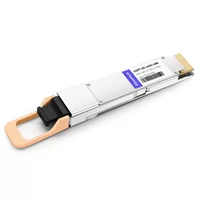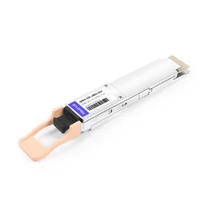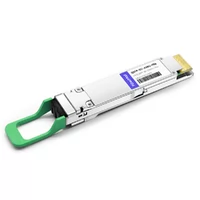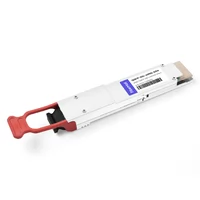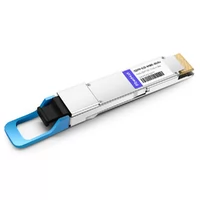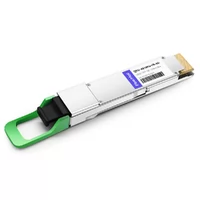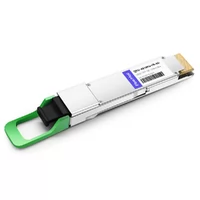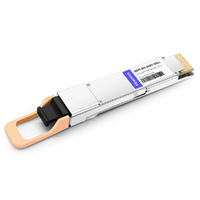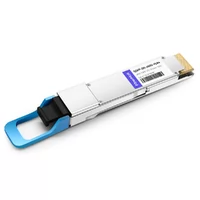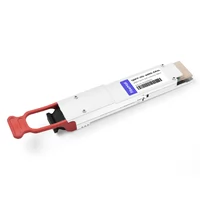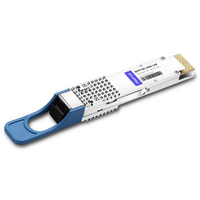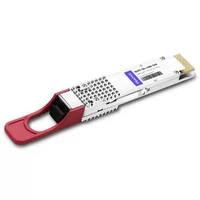In a world where data usage is growing exponentially, the need for lightning-fast internet connections has never been greater. One way to achieve this is through the Quad Small Form-factor Pluggable Double Density (QSFP-DD) Multi-Source Agreement (MSA), which enables 400G connections while still being compact enough not to take up too much space in densely packed racks. This article will discuss how these specifications affect data centers and high-performance computing environments. We will look at design principles, abilities, and potential applications so that by reading through it all, one should understand why QSFP-DD matters when it comes to modern networking challenges!
Table of Contents
ToggleWhat is the QSFP-DD MSA?
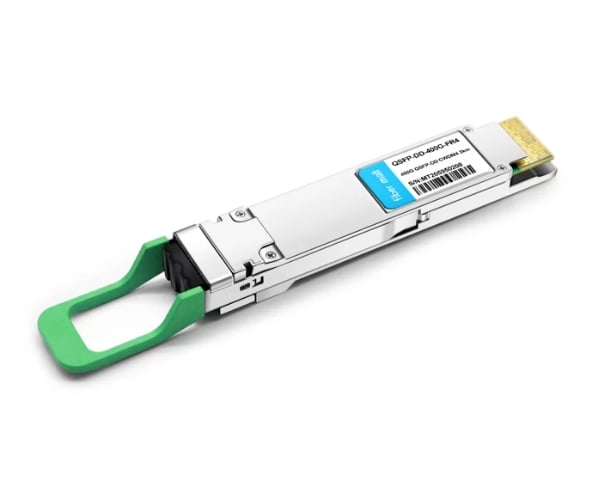
Overview of QSFP-DD MSA
The QSFP-DD MSA is a specification for 400G hardware. It does this by using the new double-density form factor that they developed. The standard allows many high-speed data links into a tiny module. It can do this because it can support up to eight 50G lanes or four 100G lanes with only one connector. The main difference between the QSFP-DD MSA and the QSFP28 is that it doubles its density while still being compatible with pins, thus making upgrades easier on existing systems. Additionally, it works across both short-range (multimode fiber) and long-range (single-mode fiber) applications, which enhances its versatility in different networking environments. With solid construction standards built into their design, these products can meet even the most demanding requirements set forth by modern-day data centers, allowing them scalability never before seen possible within evolving network architectures and investment protection.
Who are the Members of the QSFP-DD MSA Group?
The QSFP-DD MSA Group comprises networking, telecommunications, and data center solution providers. Some big names include Cisco, Arista Networks, Mellanox Technologies, and Intel. They work together on the QSFP-DD standard to be used universally, encouraging faster innovation into high-speed data transmission technology. Member companies of this association share knowledge and combine resources to promote the adoption of the QSFP-DD specification in different areas, thereby improving efficiency and capacity for modern communication networks.
Why is QSFP-DD MSA Important for Network Hardware?
The QSFP-DD MSA is necessary for network hardware because it can significantly increase bandwidth and data transmission capacity while maintaining backward compatibility. It meets the growing need for data centers and high-performance computing environment bandwidth by supporting higher data rates, such as 200G and 400 G. This standard features a small form factor that saves space and power consumption, enhancing operational efficiency. In addition, cooperation across different companies under the MSA Group ensures that devices work with one another. This creates an environment where competition drives invention faster, allowing businesses to protect their network investments for future use.
What Specifications Define QSFP-DD Modules?
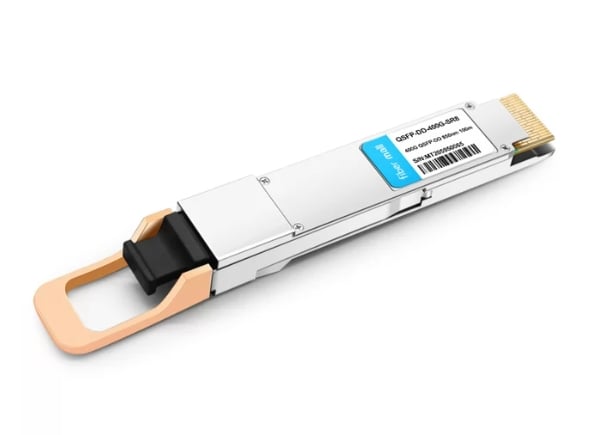
Key Features of the QSFP-DD Specification
The QSFP-DD (Quad Small Form-Factor Pluggable Double Density) specification has several key characteristics that make it an excellent choice for today’s networking needs.
- More compactness: The QSFP-DD supports higher data rates within the same form factor as its predecessor, doubling connectivity in identical space occupied by traditional QSFP modules.
- Support for Data Rates: It can handle up to 400 Gbps data rates, thereby catering to increased bandwidth requirements in modern high-speed networks and data centers.
- Backward Compatibility: This design works with any existing module based on the QSFP/QSFP28 standard without requiring any considerable change in hardware at all levels of network infrastructure integration.
- Increased Power Efficiency: Lower power consumption is another optimization made by QSFP-DDs, which helps cut operational costs while optimizing energy usage across data centers.
- Improved Performance: The PAM4 technique, adopted among other advanced transmission methods, enables maximum performance over current optical fibers through higher effective data rates, where many applications are highly demanding, thus necessitating such enhanced capabilities.
These features together position the QSFP-DD as an ideal solution for dense environments where fast speeds are needed, especially with the recent announcement of a revision 7.0 release date coming soon, which will see even more robustness added to what is already considered a very strong standard.
Understanding QSFP-DD Hardware Specification Revision
The revision of the hardware specification for QSFP-DD addresses some key advances and optimizations to improve performance, interoperability, and efficiency in high-speed networking environments. Here are a few essential updates shared by current insights from top industry sources:
- Better Interface Standards: A number of interface standards have been revised recently to enable better electrical compatibility and easier integration with existing systems. These changes aim to preserve high data integrity while minimizing signal loss, which are known technical difficulties encountered when striving for the best performance in high-speed networks.
- Support For Additional Protocols: With support now included within the latest specifications for emerging protocols, there is more room left for deployment flexibility targeting a wider range of applications like 5G, cloud computing, or AI workloads.
- More Refined Power Management Features: New power management features have been introduced that allow dynamic power allocation, thus enabling energy optimization based on real-time usage patterns. This cuts operational costs and aligns well with sustainability efforts by reducing overall energy consumption.
In conclusion, these adjustments made to the QSFP-DD specification are geared towards ensuring strong performance, compatibility, and efficiency, which will, in turn, foster the growth of network infrastructures necessary to meet future demands.
MSA and TAA Compliance in QSFP-DD Modules
When procuring and deploying QSFP-DD modules in data centers and high-speed network infrastructures, compliance with the Multi-Source Agreement (MSA) and the Trade Agreements Act (TAA) is crucial. Through MSA compliance, manufacturers are required to follow standard specifications, which makes them compatible with other vendors’ products. This is critical in areas where many hardware components must be integrated for best performance in high-density environments.
Conversely, TAA requires that only components from select countries be used on federal contracts, thereby strengthening dependability and safety in government contracts. Not only do TAA-compliant QSFP-DD modules fulfill procurement rules for organizations operating under federal guidelines, but they also guarantee quality and performance standards. This means that following these compliances will enable faster implementation while saving costs during the network installation process, thus leading to better networking systems that are both reliable and sustainable in the long run.
How Does the Form Factor Impact QSFP-DD Performance?
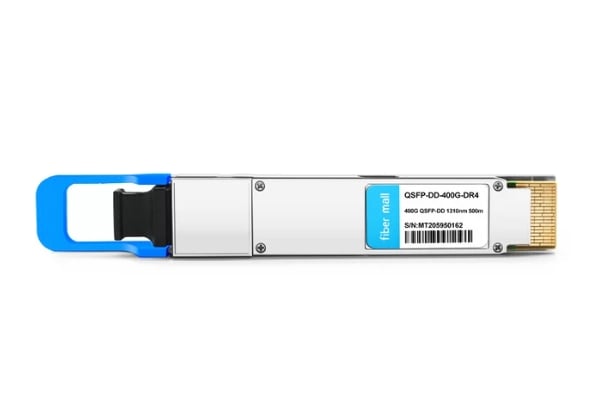
The Evolution of QSFP to QSFP-DD
The Quad Small Form-factor Pluggable (QSFP) to QSFP Double Density (QSFP-DD) standard is a leap forward in high-speed network solutions. In the beginning, modules had a maximum of 40 Gbps data rates, which were done through four channels operating at 10 Gbps each. However, with the growing demand for more information storage and retrieval systems, a need arose for wider bandwidths without necessarily making them bigger, thus making it harder to maintain peak efficiency levels.
This is achieved by doubling the channels from four to eight, enabling transmission speeds of up to 200GB/s on any single QSFP-DD port. This is made possible by improved signal processing technology and electrical and optical designs. It still retains its small size, which means that it can be used alongside existing applications but with higher capacities being achievable through seamless upgrading processes. Additionally, active and passive optical cables are supported under this new specification, thus accommodating diverse installation environments. This development not only meets the current demand for faster speeds but also positions networks to take advantage of future advances in data transmission technology.
Advantages of Double-Density Form Factor
The QSFP-DD form factor has a few advantages which enhance networking capabilities. First, higher density allows for more ports per space, thereby greatly increasing rack utilization and addressing the challenge of achieving double-density configuration. This is very useful in data center environments with limited physical space available. Second, achieving higher data rates (up to 200Gbps) increases bandwidth without requiring extra cables or infrastructure changes, thus reducing complexity and cost. Furthermore, the backward-compatible nature of QSFP-DD with previous versions ensures a smooth transition during system upgrades by organizations while minimizing disruption. Finally, the flexibility provided by active and passive optical cables supported in the QSFP-DD standard allows the optimization of configurations depending on specific application requirements. These benefits make it clear that QSFP-DD is an essential part of modern high-speed networking solutions that adequately cater for increasing demands on throughput and network scalability today.
Challenges in Achieving a Double-Density Interface
Several hurdles must be overcome before the full potential of the QSFP-DD standard can be realized in networking environments, although it has many benefits. To begin with, technical limitations cause thermal management issues because higher density means more heat is generated, thus requiring better cooling systems in data centers. Also, integrating QSFP-DD interfaces into existing infrastructure can pose problems, especially when dealing with compatibility problems in old systems. Signal integrity and loss also come into play as critical factors; therefore, transmission should be done using expensive materials and design techniques for reliable communication at high data rates. Finally, cost implications related to upgrading technologies, such as purchasing new hardware or training staff, could be a barrier during organizations’ shift towards double-density interfaces. All these challenges must be addressed if we want maximum performance and efficiency from our high-speed networks.
What are the Practical Applications of QSFP-DD Modules?
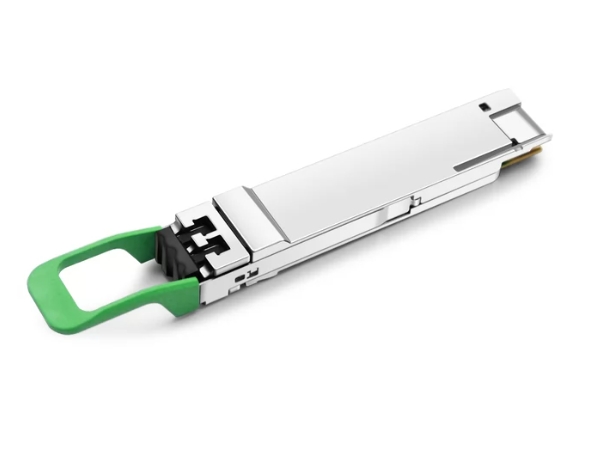
Use in 400G and 800G Networks
The key to high-speed network advancement is these modules, particularly QSFP-DD. They make 400G and 800G data transmission possible. In order for the applications to work well, they are designed to support multi-lane data transmissions, thereby doubling the capacities of previous generations. The flexibility and scalability of QSFP-DD modules in 400G networks allow data centers to cope with increased bandwidth requirements without undertaking extensive infrastructure upgrades.
QSFP-DD provides efficiency for 800G networks by incorporating advanced optical technologies like Pulse Amplitude Modulation (PAM4), which enables more information transfer to single wavelengths. This ability not only makes better use of existing fiber networks but also reduces signal loss and power consumption thus being critical for large-scale deployments. Moreover, with the widespread adoption of cloud computing and other data-intensive applications, it becomes imperative that these modules are deployed to create strong future-proof networking environments capable of supporting ever-increasing demands for throughput speed and ultra-low latency communications in tandem with each other.
Integration with Data Center Systems
Integrating data center systems with QSFP-DD modules ensures efficient connectivity, scalability, and performance. These modules are used with high-performance switches and routers, which help move data across various parts of the data center easily. By using many bandwidths through the parallelism of QSFP-DD’s multiple data lanes, data centers can attain higher throughput while minimizing physical space requirements.
Additionally, the compatibility between QSFP-DD and current network equipment through breakout configurations enables the gradual upgrading of infrastructures in data centers, thereby reducing capital expenditure. This adaptability is crucial for businesses as they deal with changes in traffic patterns and increased amounts of information being handled simultaneously. Furthermore, deployment on these modules often coincides with advanced network management systems, thus giving visibility into traffic flows alongside control mechanisms that facilitate effective load balancing while enhancing overall system resiliency. Such activities contribute significantly towards making operations smooth and safeguarding against future technology shifts within the facilities required by various industries.
Compatibility with Existing QSFP Modules
To protect their existing network infrastructure, QSFP-DD modules are backward compatible with current QSFP and QSFP28 modules. The physical connector design ensures that the QSFP-DD module can connect seamlessly with standard QSFP ports, which makes it easy for data centers to upgrade directly. In other words, this allows data centers to use old-fashioned QSFPS alongside new ones without changing all their hardware.
Additionally, these modules have breakout capabilities that allow them to be used in four different lower-speed standards, such as SFP28 or SFP+. This helps make system design and configuration more flexible. Compatibility like this dramatically improves operational efficiency because it enables step-by-step upgrades while supporting various networking needs without performance loss or complexity increase. Therefore, overall network performance will be enhanced by adopting QSFP-DD modules while ensuring a smooth transition for previous-generation QSFP technology-dependent infrastructures.
How Do QSFP-DD Connectors and Cables Work?
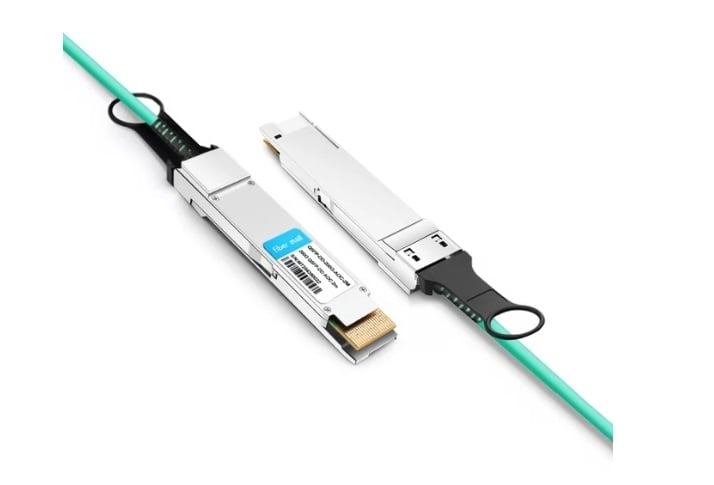
Types of QSFP-DD Cables
Broadly, there are two types of QSFP-DD cables: inactive and active.
- Inactive copper cables (DAC): These are copper wires designed for short-range connections, typically up to seven meters. They consume low power and can be used to connect switches, servers, and other devices within a data center at an affordable cost.
- Active optical cables (AOC): AOCs differ from passive cables by having optical transceivers on both ends. The transmitters convert electric signals into optical signals, while the receivers convert them back into electric form. This enables longer distances covered—usually up to 100 meters or more—without much signal loss. Furthermore, AOCs have higher bandwidth capabilities, which makes them ideal for high-performance computing applications.
Both types can handle the high data rates involved with QSFP-DD links, like 100 Gbps and beyond, satisfying current and future networking needs. The selection between DAC or AOC is dependent on specific deployment scenarios, financial considerations, and performance requirements.
Active Optical Cables vs. Passive Cables
When comparing Active Optical Cables (AOCs) to Passive Copper Cables (DACs), several key considerations should be made. AOCs have built-in optical transceivers that convert electrical signals into optical ones for longer-distance transmission—usually up to 100 meters or more. This means they can keep their performance high while minimizing signal degradation, making them suitable for use in data centers and high-performance computing environments where bandwidth is significant.
On the other hand, Passive Copper Cables don’t contain electronic components but rely on copper wires only. They can’t be used over long distances—about 7 meters at most—but this makes them cheaper than DACs when connecting devices near each other is enough. Although many standard applications require the speed provided by DACs, they may still not handle the higher data rates and wider bandwidth necessary for more complex network tasks.
In summary, one should decide whether to use AOCs or DACs based on particular deployment needs, including distance coverage, bandwidth demand, and financial limitations.
Optical Transceivers and Their Role
In modern networking infrastructure, optical transceivers play an important role as they convert electrical signals to optical signals and vice versa. These gadgets ensure fast data transfer through optical fiber across short and long distances with high accuracy. Usually, a transmitter and receiver are combined into an optical transceiver module, ensuring that the signal is converted and amplified efficiently.
Regarding their usage in different fields, several types of optical transceivers are used in the industry according to form factor and performance specifications, such as SFP, QSFP+, etc., each designed for specific speeds and distances. For example, QSFP-DD supports 200 – 400Gbps data rates, thus making it suitable for high-performance computing or DC applications where bandwidth requirements are relatively higher than in other areas. It is, therefore, necessary to choose the right device because this will impact network reliability, scalability, and overall performance, besides considering future growth plans based on particular needs related to networking setup.
What Does the Future Hold for QSFP-DD Technology?
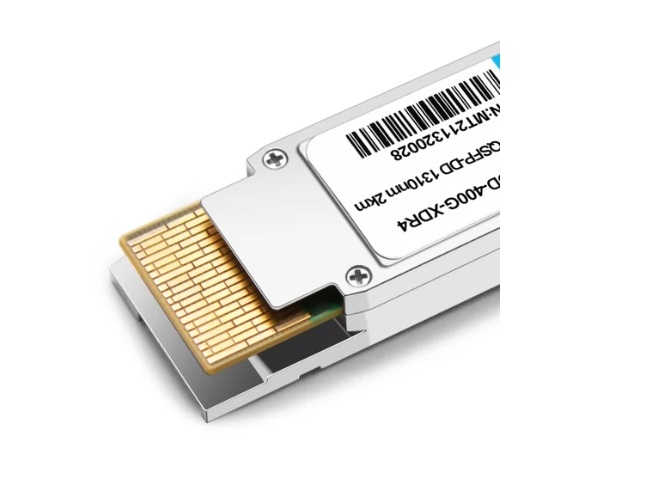
Upcoming Hardware Specification Revisions
Since data centers and enterprise networks need more bandwidth, many new hardware specification revisions will improve the performance of QSFP-DD technology. Manufacturers in the lead are working together on specifications for next-generation, which aim to increase data rates above what they currently are. Fundamental changes include improvements to the electrical interface to save power, optimized thermal management solutions, and broader support for multi-fiber connectivity, which helps reduce latency and enhances transmission quality. These developments will enable systems scale better while becoming flexible enough to handle applications like cloud computing, 5G services among others related with artificial intelligence workloads. Infrastructure planning and investment decisions made in the network architecture landscape should be significantly affected by these changes; hence, stakeholders must stay alert about them.
New Specifications and Innovations
We have updated our QSFP-DD technology to meet future requirements for sending more data. Some of how this has been achieved is through the use of new materials and protocols in transceiver design by manufacturers, which increase signal fidelity while decreasing power consumption by integrating AI-based network optimization tools into such systems along with automated wavelength management, among others. What’s even better is that these improvements are not only limited to bettering existing applications, but also pave the way for stronger implementations within edge computing or next-generation telecommunication networks. Therefore, anyone involved in telecommunications or data centers needs to keep up with what’s happening around this area because failure to do so might lead them to invest heavily in outdated infrastructures that will never be aligned with any of the latest technologies regarding advancement.
The Future of Fiber Optic Networking
Driven by growing bandwidth wants and the need for fast data transfer, the prospective future of fiber networking will experience a significant transformation. According to experts, developments in optical technology will allow even quicker transmissions by utilizing multi-terabit-per-second rates achieved through improved wavelength division multiplexing techniques. These innovations include passive optical networks (PON) and dense wavelength division multiplexing (DWDM), which can be deployed alongside other advanced fiber architectures to enable higher capacities and better efficiencies when transmitting information between homes or businesses.
In addition, fiber optic cables will serve as the infrastructure over which 5G networks are built; they must provide shallow latency connections necessary for real-time applications such as remote surgery or self-driving cars. Another consideration is sustainability – with more people using electronic devices than ever, we urgently need environmentally friendly materials and power-saving features in our systems so that we do not destroy the planet while trying to connect everyone. In summary, then, what does it mean? Essentially, what these changes tell us is that soon enough, not only will fiber optics cover current needs but also be able to accommodate any amount of growth within digital communication hereafter.
Reference Sources
Frequently Asked Questions (FAQs)
Q: What is the QSFP-DD MSA and why is it essential for 400G networks?
A: The Quad Small Form Factor Pluggable Double Density (QSFP-DD) Multi-Source Agreement (MSA) is the data center hardware specification that addresses increased bandwidth needs. It offers a 400-gigabit Ethernet (GbE) solution by doubling speed within same-sized small form-factor pluggable (SFP) transceivers.
Q: How does the QSFP-DD MSA ensure backward compatibility?
A: Under this agreement, one-way backward compatibility with QSFP modules can be achieved through mechanical design elements, such as ensuring they fit into an existing module space or utilizing older cables when necessary. However, it’s not just about physicality. There are also electrical interface considerations, so any new requirements should not prevent signals from being sent between different types of connectors currently available on devices like switches, etc.
Q: What are some key components found within the specifications for QSFP-DD MSAs?
A: Some of them include thermal management guidelines, electrical interfaces, and mechanical designs, which are used in ensuring Qsfp-dd modules and cables meet Msa compliance requirements hence, able to work reliably when designed into systems targeting four hundred gigabit networks
Q: Who contributes most towards drafting up these standards?
A: The Quad Small Form-Factor Pluggable Double-Density Multi-Source Agreement was created through various contributions made by top tech giants and major players in this industry. This means that manufacturers, vendors, and service providers all had their say during the development processes of these documents, which were refined further under strict supervision from chairs appointed by both groups involved in its creation process aimed at getting things done right once and for all time.
Q: What sets apart the QSFP-DD form factor from its predecessor?
A: Unlike its predecessors, which only supported four lanes per port, the qsfp-dd interconnects have eight electrical lanes, hence double density. This allows for higher data rates while keeping things compact, thereby addressing one of the challenges faced by designers looking to achieve more bandwidth within the limited space available in modern devices, such as switches used for high-speed networking applications, among others.
Q: When did the latest hardware specification for QSFP-DD MSA come out?
A: Recently, the latest hardware specification of QSFP-DD MSA, Revision 7.0, was released. This specification improves upon current QSFP-DD modules by expanding their capabilities. This update includes changes made to meet new industry requirements and technological advances so that it stays relevant over time.
Q: Does the QSFP-DD MSA have any technical difficulties associated with its specifications?
A: Yes, there are some challenges faced when trying to achieve a double-density interface and ensuring mechanical stability, thermal management, and signal integrity, which were all taken into consideration during the design and testing phases described in the QSFP-DD MSA specification document.
Q: Can you use QSFP-DD modules with existing infrastructure?
A: Yes, backward compatibility has been maintained between these two types of devices; this implies that currently deployed systems based on QFSP or QFSP+ can be used alongside these new modules, thus providing a simple upgrade path for 400G networks.
Q: What benefits does the pluggable QSFP-DD module provide in data center environments?
A: Pluggable qsfp-dd modules offer flexibility, scalability, and serviceability advantages within data center deployments, where different racks may require various link lengths or line rates. This allows for quick replacements without affecting other parts of the network, reducing maintenance complexity since they comply with MSA and TAA standards.
Q: Where would I typically find qsfp-dd modules being used?
A: Some areas where you might find used-dd modules utilized frequently include high-speed data center interconnects (DCIs), high-performance computing (HPC) clusters, or large-scale public cloud providers serving multiple regions worldwide. Due to their scale and the nature of work being done today in the networking industry, such applications need efficient long-haul transmission capabilities.
Related Products:
-
 QSFP-DD-400G-SR8 400G QSFP-DD SR8 PAM4 850nm 100m MTP/MPO OM3 FEC Optical Transceiver Module
$149.00
QSFP-DD-400G-SR8 400G QSFP-DD SR8 PAM4 850nm 100m MTP/MPO OM3 FEC Optical Transceiver Module
$149.00
-
 QSFP-DD-400G-DR4 400G QSFP-DD DR4 PAM4 1310nm 500m MTP/MPO SMF FEC Optical Transceiver Module
$400.00
QSFP-DD-400G-DR4 400G QSFP-DD DR4 PAM4 1310nm 500m MTP/MPO SMF FEC Optical Transceiver Module
$400.00
-
 QSFP-DD-400G-SR4 QSFP-DD 400G SR4 PAM4 850nm 100m MTP/MPO-12 OM4 FEC Optical Transceiver Module
$450.00
QSFP-DD-400G-SR4 QSFP-DD 400G SR4 PAM4 850nm 100m MTP/MPO-12 OM4 FEC Optical Transceiver Module
$450.00
-
 QSFP-DD-400G-FR4 400G QSFP-DD FR4 PAM4 CWDM4 2km LC SMF FEC Optical Transceiver Module
$500.00
QSFP-DD-400G-FR4 400G QSFP-DD FR4 PAM4 CWDM4 2km LC SMF FEC Optical Transceiver Module
$500.00
-
 QSFP-DD-400G-ER4 400G QSFP-DD ER4 PAM4 LWDM4 40km LC SMF without FEC Optical Transceiver Module
$3500.00
QSFP-DD-400G-ER4 400G QSFP-DD ER4 PAM4 LWDM4 40km LC SMF without FEC Optical Transceiver Module
$3500.00
-
 QSFP-DD-400G-XDR4 400G QSFP-DD XDR4 PAM4 1310nm 2km MTP/MPO-12 SMF FEC Optical Transceiver Module
$580.00
QSFP-DD-400G-XDR4 400G QSFP-DD XDR4 PAM4 1310nm 2km MTP/MPO-12 SMF FEC Optical Transceiver Module
$580.00
-
 QSFP-DD-400G-LR4 400G QSFP-DD LR4 PAM4 CWDM4 10km LC SMF FEC Optical Transceiver Module
$600.00
QSFP-DD-400G-LR4 400G QSFP-DD LR4 PAM4 CWDM4 10km LC SMF FEC Optical Transceiver Module
$600.00
-
 QDD-4X100G-FR-Si QSFP-DD 4 x100G FR PAM4 1310nm 2km MTP/MPO-12 SMF FEC CMIS3.0 Silicon photonics Optical Transceiver Module
$650.00
QDD-4X100G-FR-Si QSFP-DD 4 x100G FR PAM4 1310nm 2km MTP/MPO-12 SMF FEC CMIS3.0 Silicon photonics Optical Transceiver Module
$650.00
-
 QDD-4X100G-FR-4Si QSFP-DD 4 x 100G FR PAM4 1310nm 2km MTP/MPO-12 SMF FEC CMIS4.0 Silicon photonics Optical Transceiver Module
$750.00
QDD-4X100G-FR-4Si QSFP-DD 4 x 100G FR PAM4 1310nm 2km MTP/MPO-12 SMF FEC CMIS4.0 Silicon photonics Optical Transceiver Module
$750.00
-
 QSFP-DD-400G-SR4.2 400Gb/s QSFP-DD SR4 BiDi PAM4 850nm/910nm 100m/150m OM4/OM5 MMF MPO-12 FEC Optical Transceiver Module
$900.00
QSFP-DD-400G-SR4.2 400Gb/s QSFP-DD SR4 BiDi PAM4 850nm/910nm 100m/150m OM4/OM5 MMF MPO-12 FEC Optical Transceiver Module
$900.00
-
 QSFP-DD-400G-PLR4 400G QSFP-DD PLR4 PAM4 1310nm 10km MTP/MPO-12 SMF FEC Optical Transceiver Module
$1000.00
QSFP-DD-400G-PLR4 400G QSFP-DD PLR4 PAM4 1310nm 10km MTP/MPO-12 SMF FEC Optical Transceiver Module
$1000.00
-
 QSFP-DD-400G-ER4L 400G QSFP-DD ER4 Lite 30km LWDM4 LC SMF with FEC Optical Transceiver Module
$3000.00
QSFP-DD-400G-ER4L 400G QSFP-DD ER4 Lite 30km LWDM4 LC SMF with FEC Optical Transceiver Module
$3000.00
-
 QSFP-DD-400G-LR8 400G QSFP-DD LR8 PAM4 LWDM8 10km LC SMF FEC Optical Transceiver Module
$2500.00
QSFP-DD-400G-LR8 400G QSFP-DD LR8 PAM4 LWDM8 10km LC SMF FEC Optical Transceiver Module
$2500.00
-
 QSFP-DD-400G-ER8 400G QSFP-DD ER8 PAM4 LWDM8 40km LC SMF FEC Optical Transceiver Module
$3800.00
QSFP-DD-400G-ER8 400G QSFP-DD ER8 PAM4 LWDM8 40km LC SMF FEC Optical Transceiver Module
$3800.00
Related posts:
- Next-Gen Data Transfer: SFP112/QSFP112/QSFP-DD800/OSFP 800G DAC
- Everything You Need to Know About CWDM Transceivers: From SFP Modules to 80km Optical Fiber Connectivity
- The Ultimate Guide to SGMII SFP Transceivers: Everything You Need to Know About Optical Transceivers and Ethernet Ports
- Unraveling the World of 400ZR: Enhancing DCI Networks with QSFP-DD and DWDM up to 120km.

